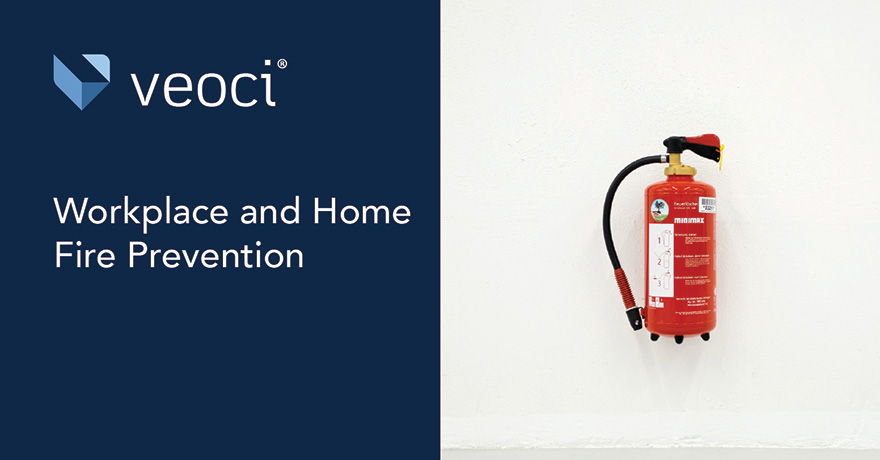Within the last five years, there has been an estimated average of 346,800 fires in homes per year and over 4,000 fires in offices per year, causing many deaths, injuries, and property damages. October is Fire Prevention Month, and the holiday has helped raise awareness of fire safety for the past 100 years. And with it being October, we thought we should explore some fire prevention strategies.
Workplace Safety
Fires inside buildings can be caused by cooking, electrical equipment, heating equipment, or smoking material.
In a workplace environment, the most common causes of fires are from electrical appliances. Organizations should spread awareness of fire safety among their employees and train them on how to handle any possible fire risks.
1. Reduce Fire Hazards
There are simple ways to help reduce the potential for workplace fires:
- Do not use damaged cords, and throw them away. Frayed cords can be very dangerous and increase the odds of appliance malfunction.
- Unplug appliances when not in use.
- Do not overload outlets. Plugging too many devices into the circuit can overload it, creating another hazard.
- Be wary of faulty wiring. Poor wiring configurations also increase fire risks.
2. Pay Attention to Your Surroundings
A common fire prone area in the office is the employee break room and/or kitchen. Both of these areas contain common kitchen appliances, like stoves, microwaves, and fridges. Task someone in the office, like the office manager, with maintaining these devices. Check cords are in good condition and the appliance overall is in good working order. If necessary, replace a device or inquire about servicing.
Storage areas holding electrical equipment also need to pass the eye test. Mixed cords can cause a fire. Electrical equipment should also not be stored near incompatible items, and should be kept away from high heat environments.
If a fire does break out, fire extinguishers will quickly mitigate the threat. Large enough fires should be a job left for the local fire department. But small kitchen issues are pacified well by a fire extinguisher.
Make fire extinguishers accessible in your workplace and keep employees aware of each can’s whereabouts. The foam machines also require monthly inspections, and an office manager (or other responsible party) should ensure those looks happen.
3. Exit Pathways and Evacuations
Evacuation plans are absolutely necessary; while prevention is the goal, safety becomes a priority in an actual fire scenario.
Generally, people should use the stairs to exit the building rather than the elevator. If workers cannot evacuate, stay by the window and wait for help.
Buildings should have emergency exit diagrams posted to indicate the best route to leave. Predefined routes and knowledge of those routes will enable a faster evacuation.
Being proactive is the best approach. Overall, organizations need to keep their employees informed of office safety procedures and guidelines. Companies should provide employees the proper training for these scenarios. Implementing these procedures will help reduce the likelihood of an incident, or mitigate the damage during one.
Home Safety
The two most common leading causes of fires in homes are cooking and heating and why the winter months have such high fire-related deaths. Homeowners and families should be conscious of this fact and how appliances in their homes can cause fires.
1. Heaters
With the colder months approaching, be sure to never leave space heaters and fireplaces unattended. It’s also important to keep children away from both. Additionally, keep flammable items away from heat. Make sure to have your in-home heating source clean and working properly, such as furnaces, chimneys, and stoves.
2. Smoke Alarms
Install smoke detectors on every floor of your home. Make sure to test them once a month and replace their batteries at least once a year. Have smoke alarms in your bedrooms and outside of rooms as well to detect smoke.
3. Fire Escape
In the case of a fire, make sure all household members know the best way to exit the house. Create two escape routes for extra safety. Have a designated place outside where everyone can meet and be accounted for. Communicate with everyone in the household about the plan to make sure everyone is on the same page, especially children.
The Importance of Preparedness
If a fire starts, you could have less than 2 minutes to evacuate. Stay aware of your surroundings and take caution early to help reduce the chances of a fire starting. Learning the protocols and how to respond to a fire is a huge part of fire safety and is important whether you’re in the office or at home. Fire hazards are more common than we think, so take action sooner than later.








